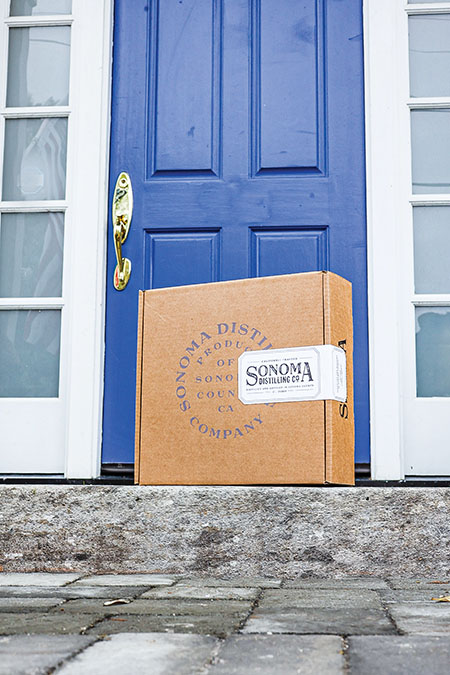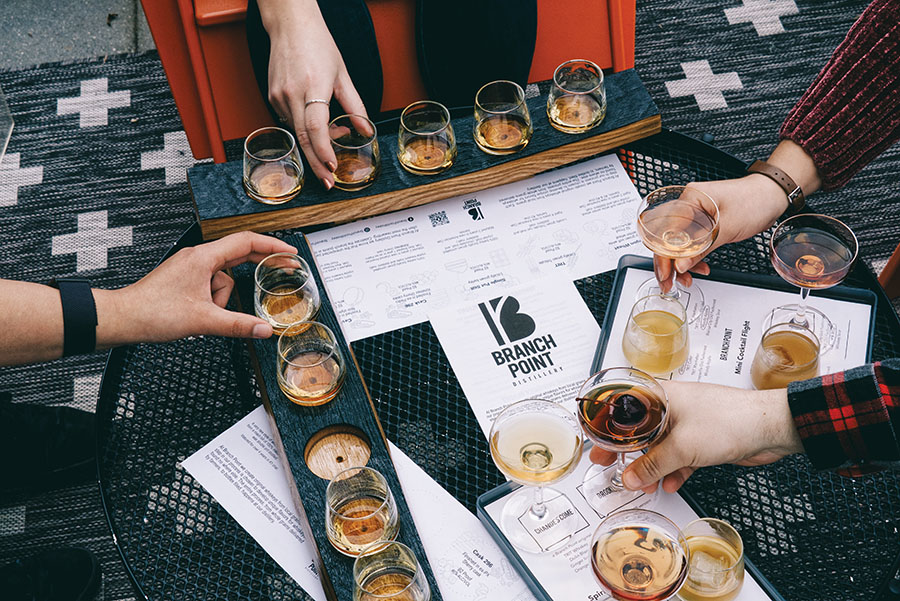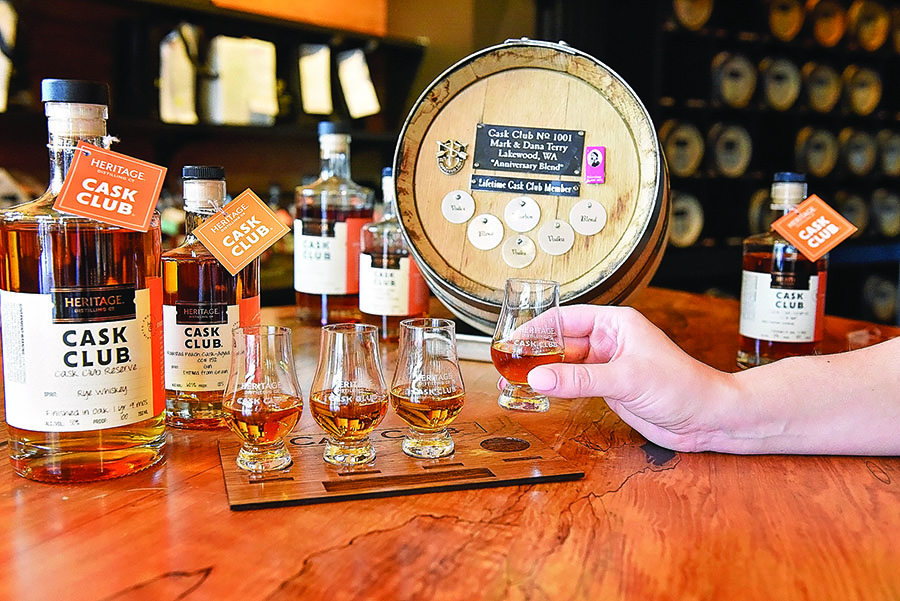
While D2C, RTD and tasting rooms get the business headlines, the most overlooked and potentially most powerful spirits business model is subscriptions.
The benefits include predictability in the production plan, recurring revenue, stabilized cash flow and better consumer insights. There are also significant complications that should be considered, primarily around logistics and labor.
The regulatory environment in the distilled spirits industry is changing rapidly. While direct to consumer shipping is not currently allowed in all states, there is strong evidence that governing bodies are moving in that direction. Before getting serious about starting or expanding a subscription program, consult a regulatory attorney who is attuned to the ever-changing rules.
Selling Subscriptions
Depending on the nature of companies’ subscription program, they may have a group of committed consumers who are dedicated to their brand. Members can create a halo effect for a brand. Because of their commitment, they are likely to spend more on the brand and talk about it more with others. Trade practice rules do not allow producers to pay referral fees or the like, but nothing prevents raving fans from sharing their interests with other like-minded consumers. A well-done subscription programs can create an organic fan base.
On the other side of the coin, that community may require additional touchpoints. Members want to feel special, and exclusive features require additional time, effort and money. Every company should decide if unique features offered to members will pay future dividends.
A major advantage of cultivating the community is that it gives the producer a direct line of communication with consumers. Through member communication channels, they can explain what products and trends they are most interested in, which is extremely valuable, especially when preferences change rapidly.
A Primer of Financial Metrics
CUSTOMER LIFETIME VALUE (LTV)
(average $ spend per year) x (tenure in years) x (gross margin) = lifetime value
CUSTOMER ACQUISITION COST (CAC)
(total marketing spend for new members ) / (number of new members)
The typical benchmark LTV-to-CAC ratio is 3:1. That’s $3 in lifetime value (LTV) to $1 in acquisition cost (CAC). Paying $1 of acquisition for every $3 of lifetime value is a reasonable return on investment. Many of large producers with serious long-term brand loyalty are realizing LTV-to-CAC ratios of 7:1 to 12:1.
Accounting Issues
Deferred revenue: In a subscription model, the member generally pays for the goods before they are available to the member. For the time period between cash received until goods are made available (generally by being shipped), the receipt is recorded as a deferred revenue liability.
Deferred revenue is considered a liability at this stage because, under accrual accounting standards, the revenue recognition process has not yet been completed. The payments are considered a liability because it represents a future obligation of the producer (to deliver goods to the customer). Once the goods are shipped, the liability is relieved and it becomes revenue.
Gross margin expectations and data insights: Most producers offer high-end, rare products in subscription packages. Because of this exclusive nature, the gross margins will be higher than core offerings.
Producers should adjust their accounting system to gain visibility into goods sold via subscription versus other sales channels. This may require an update to the chart of accounts — or creating classes, departments or divisions in the GL software. Businesses should review the SKU margin by channel (e.g., wholesale versus subscription) and maintain different benchmarks for each. Margin for wholesale whiskey may be 60 percent, whereas subscription whiskey may be 80 percent. If all sales channels are presented together, one cannot discern whether margin targets are achieved. Cash flow: Cash flow becomes significantly more predictable with a subscription program. A common structure is to have four shipments per year, with credit cards charged on a particular day. This really makes it easy to track cash inflows. Of course, there is no guarantee that the number of members will always stay the same, but the quantity is relatively predictable.
Likewise, the cash outflows for inventory for subscription plans may become more predictable as well. This will vary depending on if the subscription model includes aged or unaged spirits. The more mature the product sold, the less impact it will have on forecasting for cash outflows.

Logistics
Subscription models often require producers to serve a broad geographic area, which has its own positive and negative considerations. Best-case scenario, a brand may develop a strong following in a specific market such that it wants to engage a wholesaler. If done successfully, this could be a strategic and advantageous way to enter a new market.
On the contrary, there are many ways that broad geography complicates operations. Producers may need to do a fair bit of research to determine the best way to get a product to far-flung markets and may require a relationship with third-party delivery service. Companies should not underestimate the amount of time required to research and select logistics partners.
Shipping costs will be more expensive the further away the destination. This should be passed on to the customer. Various methods of passing on the cost include building it into the cost of the subscription fee, applying a flat fee or billing the actual amount incurred. It is recommended to bill through the actual amount incurred because this largely depends on the price of fuel, which is out of the control of a producer.
Physical space can be an issue. Some clubs are “pick-up only,” especially in areas where direct-to-consumer is not yet permitted. Does a distillary have space available for these goods? If the subscription is for aged product, is additional storage area needed for cellaring liquid?
In a similar vein, producers need a system for managing club allocations. How can the risk of overselling be avoided? A simple solution is to have a separate physical warehouse for allocation of product.
Many producers struggle with product that is forfeited. Best practice is to have a policy that is clearly spelled out in a member agreement that is signed by the customer. However, distilleries may still decide to give refunds in the event that goods are not delivered in order to provide good customer service. When drafting a member agreement, it is strongly recommended to consult an attorney knowledgeable in the matter.
Most programs ship a box of spirits to consumers. In addition to freight, there are costs associated with packaging the goods, specifically labor. Labor shortages are plaguing the American economy, so before launching a subscription program, a distillery should think critically about whether it can successfully fulfill orders.
Other labor may be required for other aspects of the program. For example, if exclusive events are held for members, this will not only require more manpower but possibly a different skillset than is currently on the team.

And The Bottom Line Is…
As the competitive environment for craft producers continues to heat up, subscription models is a way to continue to win in a crowded market. Major advantages revolve around the margin of goods sold and consumer relationship. Assuming a subscription is for high-end, exclusive products, the margin will be much richer than core offerings.
If done correctly, communication with members can be a conduit to learn what they want. Additionally, members are likely to spend more with a distillery than non-members. Further, subscription models add a nice predictability to operations and cash flow. In a perfect world, all elements of sales and finance would be fixed, so this is one step closer to utopia.
The other side of the coin is that subscription models have additional hurdles and costs. Most of these are around logistics, requirement of additional personnel and marketing. It is important for producers to obtain regulatory clearance and to create a financial model of the subscription program before deciding to move forward. Handled correctly, a subscription program can be a major win in a crowded market.








